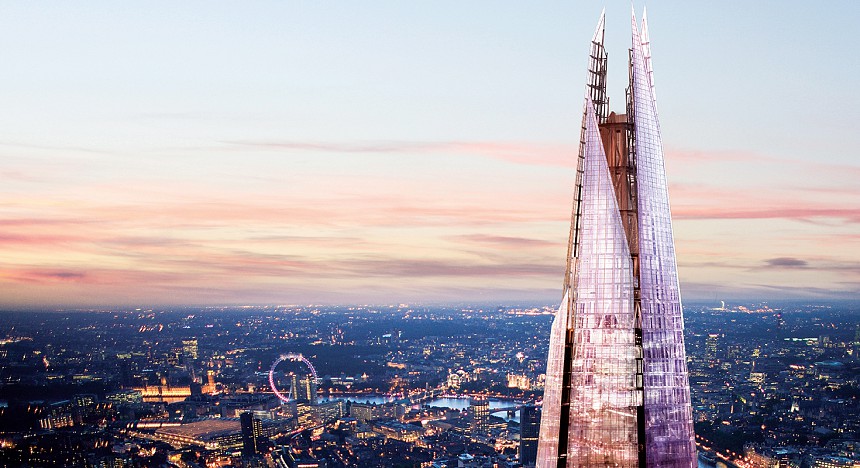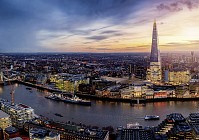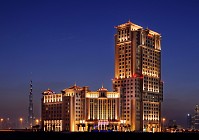Every capital city needs a modern icon; London got its in 2012, when the last sheet of glass was laid on The Shard, a 309-metre tall tower that rises above the rooftops of the South Bank to claim the title of tallest building in Western Europe. Today, The Shard appears to have emerged from the ground below London Bridge Station like some sort of cyber-organic glass and steel monolith and, despite its futuristic appearance, become an integral part of the cityscape. The spire mesmerises all within a 50-mile radius with its shimmering appearance, but like an ancient tree, its roots also go far and deep, drawing nourishment and inspiration from all over this fast-paced neighbourhood.
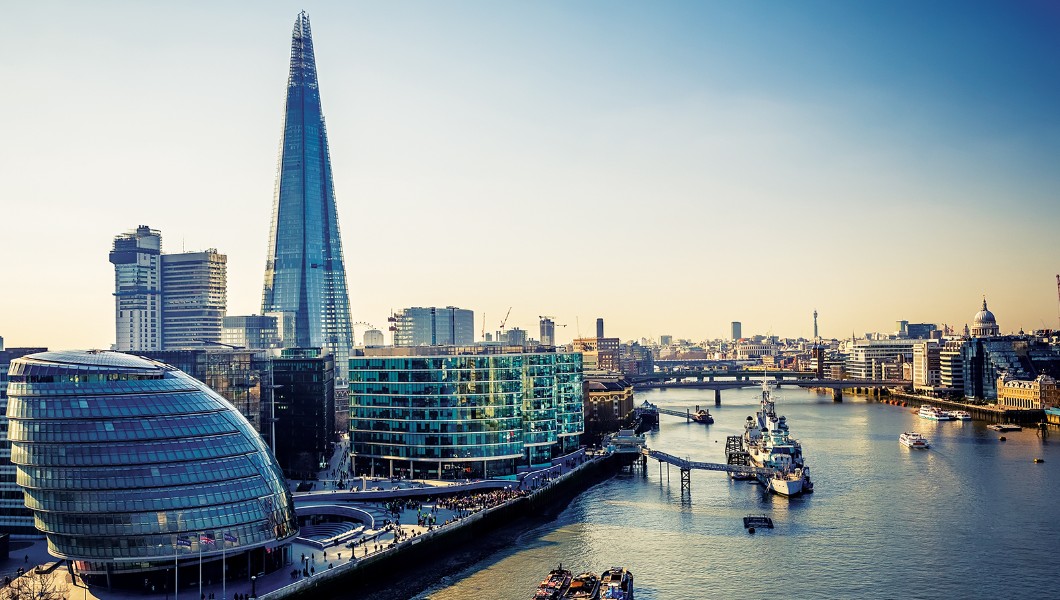
Integration was evidently part of the masterplan for the team at the Shangri-La Hotel, At The Shard, London, a fabulously appointed collection of 202 rooms and suites that occupies the 34th to 52nd floors of The Shard. From the moment you enter the ground floor lobby, the spirit of the city of London is an ever-present part of the experience. From the artwork in the public spaces and the ingredients in the restaurants, to the breath-taking views that greet guests stepping out of the elevator into the 35th floor ‘sky lobby’, Shangri-La at The Shard is a London hotel in every sense.
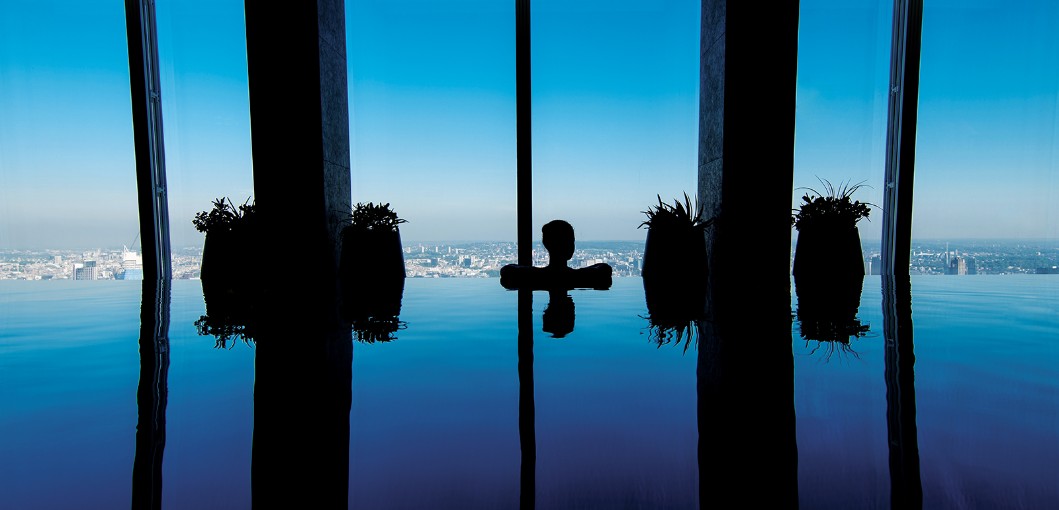
At one corner of the ground floor lobby, artwork by local graffiti artist Mr Cenz adorns the walls of Bar 31, the recently opened neighbourhood style café and bar offering, amongst other things, a selection of craft beers from local brewers such as Anspach & Hobday, and gins from Jensen’s Distillery, both of which are based in former warehouses underneath the railway arches in nearby Bermondsey. At weekends, live music comes courtesy of buskers and street performers ‘discovered’ by the Shangri-La team within the warren of passageways in London Bridge train station, and to the rear of the bar, a striking mosaic entitled ‘A Riot of Colour’ is made up of hundreds of ceramic fragments found along the shores of the River Thames, immortalising bits of London history within the walls of the venue.
The result is that Bar 31 (named for the hotel’s address at 31 St. Thomas Street) gives off a warm community atmosphere and a strong sense of place; a laid back locale that forms a convenient transition between the bustling streets of the area and the haven of tranquillity in the rest of the Shangri-La above.
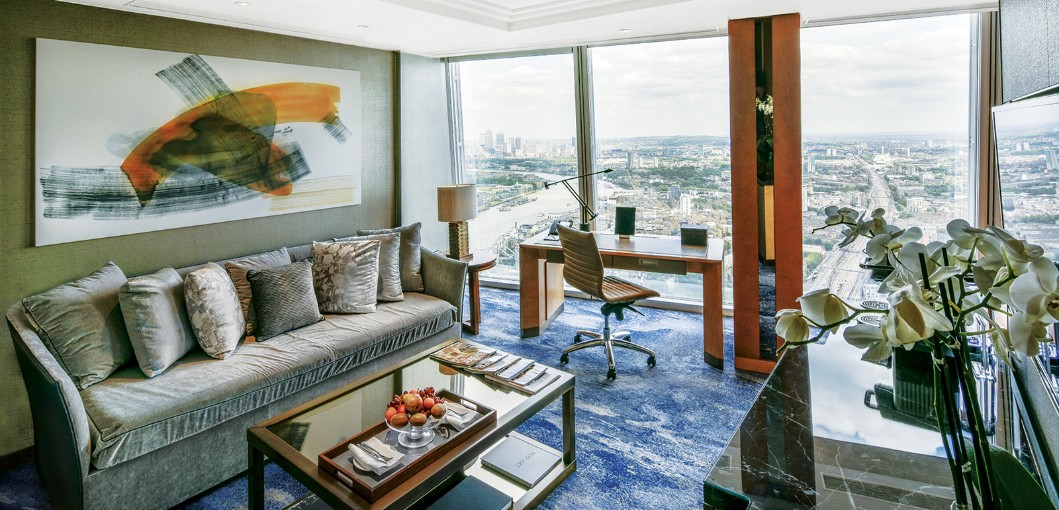
A PLACE TO STAY
Beneath the Renzo Piano-designed glass exoskeleton, made up of 11,000 individual sheets of triple-glazed glass, The Shard rises like an elongated pyramid to the 87th floor viewing deck. Because of this tapering effect, the Shangri-La’s 185 rooms and 17 suites are all unique in size and shape, a challenge readily accepted by Hong Kong-based LRF Designers, the company behind most of the hotel’s interior aesthetic. I’m staying in a City Deluxe Room on the corner of the 42nd floor, which boasts a spectacular view over West London and affords a close-up glimpse of the unique architectural structure of the building.
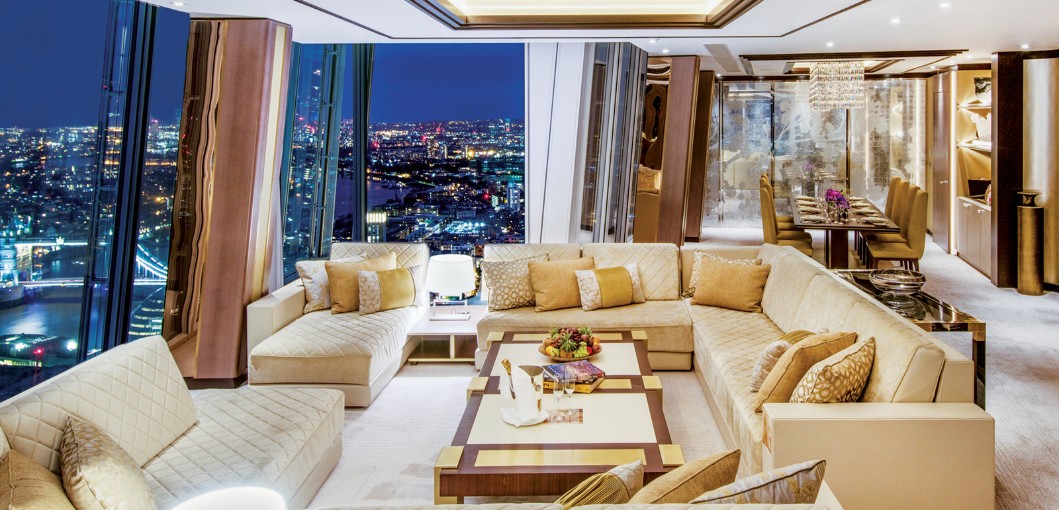
Thoughtful touches like a pair of Opticron binoculars and a helpful guide to some of the city’s unique landmarks make it very difficult to do much else other than gaze out the window at the city for the first couple of hours. To the west, the River Thames meanders past the London Eye and the Houses of Parliament, the red-brick tower of the Tate Modern and below Southwark and Blackfriar’s bridges. The dome of St. Paul’s Cathedral rises above the rooftops on the far bank and, directly ahead, the modern buildings of the City of London appear to be just a stone’s throw away.
If you get tired of standing at the window, the same views can be enjoyed from the desk, the king-sized bed or the magnificent freestanding bathtub in the bathroom, one of 80 in the hotel that look out over the city.
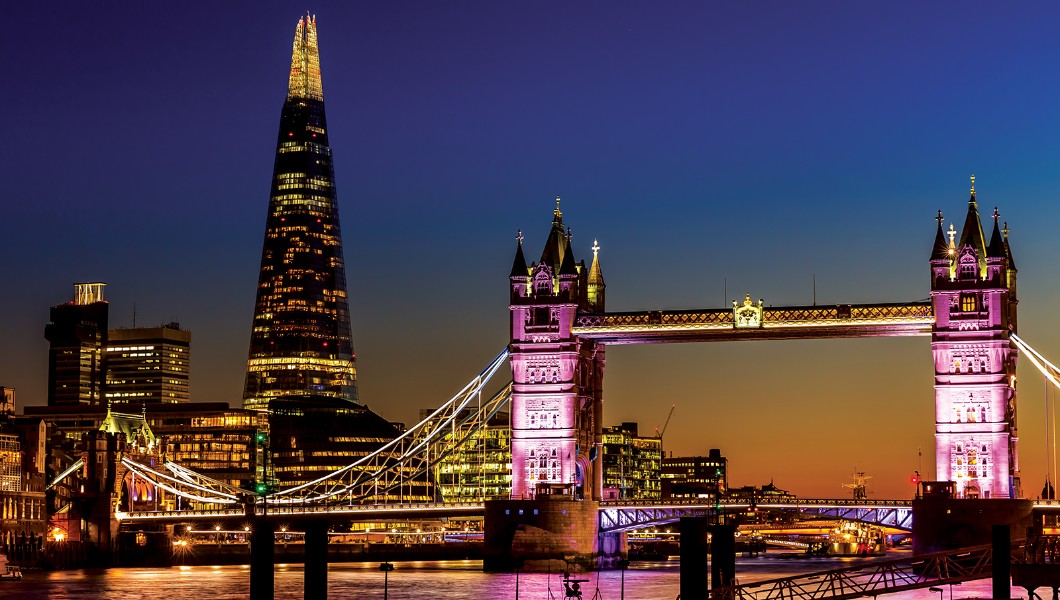
Subtle hints at Shangri-La’s Asian heritage creep in through the Chinese silk bedframe with carefully stitched flowers, and his and hers kimonos, but the overall effect is one of understated elegance, the designers quite rightly allowing the scene outside the windows to provide the most arresting design feature.
All of the rooms and suites boast show-stoppings views, none more so than the £10,000 per night Shangri-La Suite; a striking blend of Bond-villain lair and superyacht-style living space created by Italian design firm FM Architettura d’Interni Studio, which specialises in superyacht design. There’s a telescope for sightseeing, a dining table that seats 10, a private elevator, an enormous bedroom with 1,000-thread count super king-sized bed, and a private study; all spread out over 188 square metres and surrounded by floor to ceiling windows.
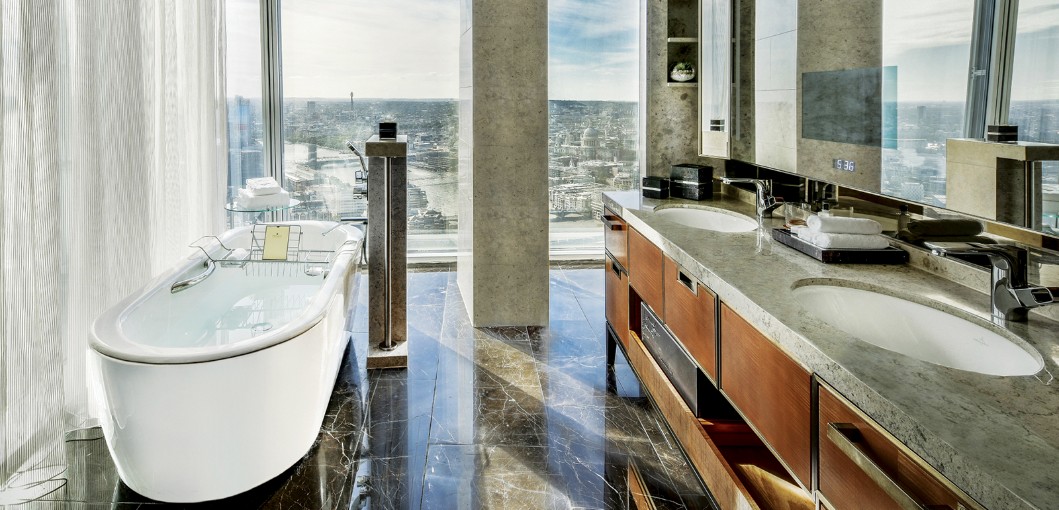
As well as captains of industry, visiting dignitaries and the occasional foreign royal, the Shangri-La Suite is used for corporate gatherings and magazine shoots (Idris Elba was photographed here for an Esquire cover story in 2016) and is currently hosting a series of intimate theatrical performances called ‘Theatre in the Clouds’. Local theatre company Revels in Hand has used the physical space of the suite as the set for plays by Noel Coward and John Van Druten; dynamic productions that move from the suite’s living room to the bedroom while audiences huddle around enjoying champagne and canapés. It’s classic South Bank – where creativity and live performance are a part of daily life – given the five-star treatment.
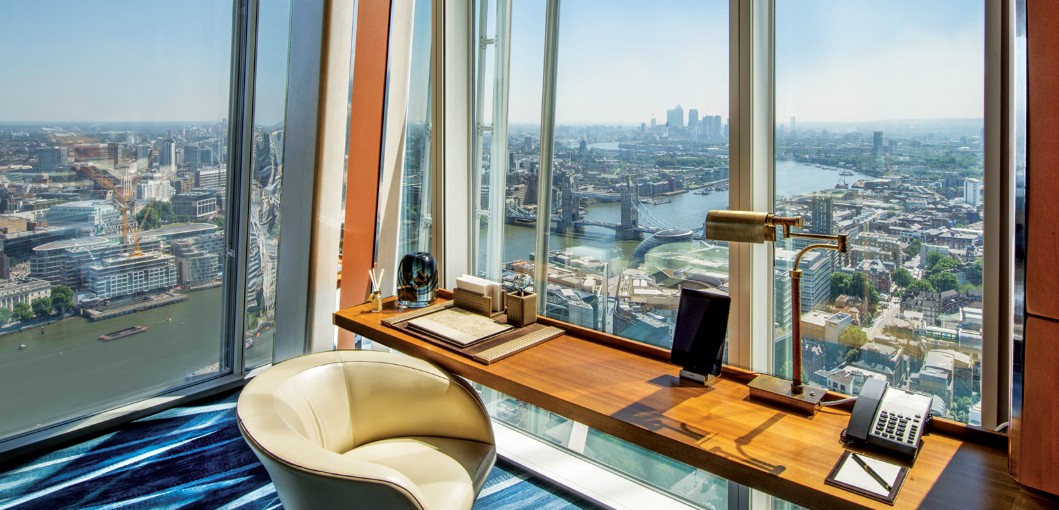
After an international flight, guests will likely want to make their way up to the 52nd floor for a seriously scenic dip in the swimming pool; an Instagram worthy marvel that boasts the title of the highest pool in Europe. If you time your visit well, it’s a sublime experience to lean over the infinity-sided pool while gazing out at the skyline, as the sun dips below the horizon and the city lights twinkle on; a chance to reflect on this great neighbourhood hotel.
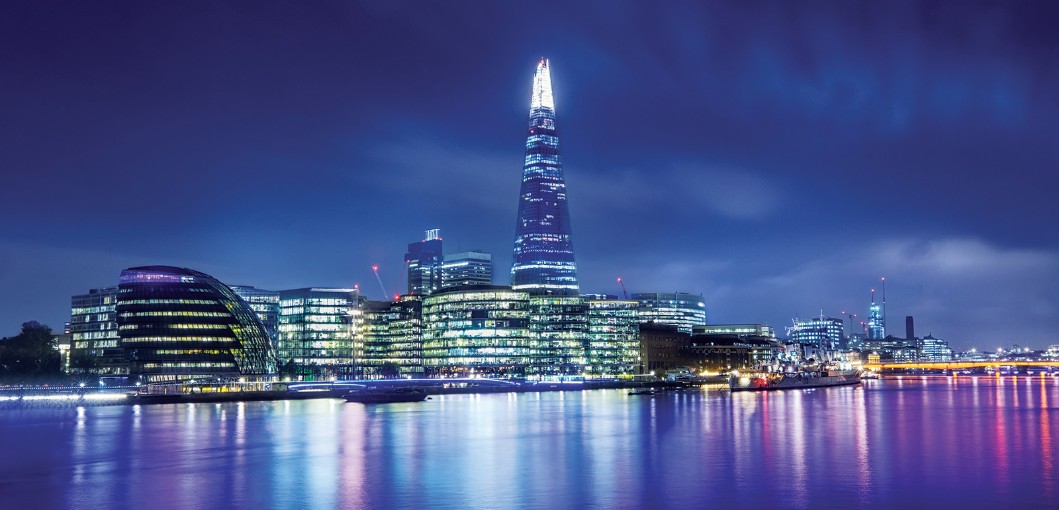
Next door to the pool, Andre Fu’s fabulously designed GONG Bar is in intimate and lively venue, where creative cocktails are built around a different theme each year. During my stay, the ‘Director’s Cut’ menu offers a selection of 16 cocktails and four mocktails inspired by the world’s favourite film directors. Served with all the drama, suspense and attention to detail for which their respective directors are known, each cocktail comes in its own bespoke glass: my Francis Ford Coppola-inspired ‘Bulletproof’ comes in a glass embedded with a 9mm bullet. Puffs of smoke from other concoctions and the occasional awed “oooh” rise up around the bustling lounge, which is a full house at 7.45pm on a Monday night, thanks in part, no doubt, to the mesmerizing golden-hour views of London. (The newly-launched cocktail menu is called ‘A Miscellany of Inventions’ and promises playful creativity that will appeal to all the senses.)
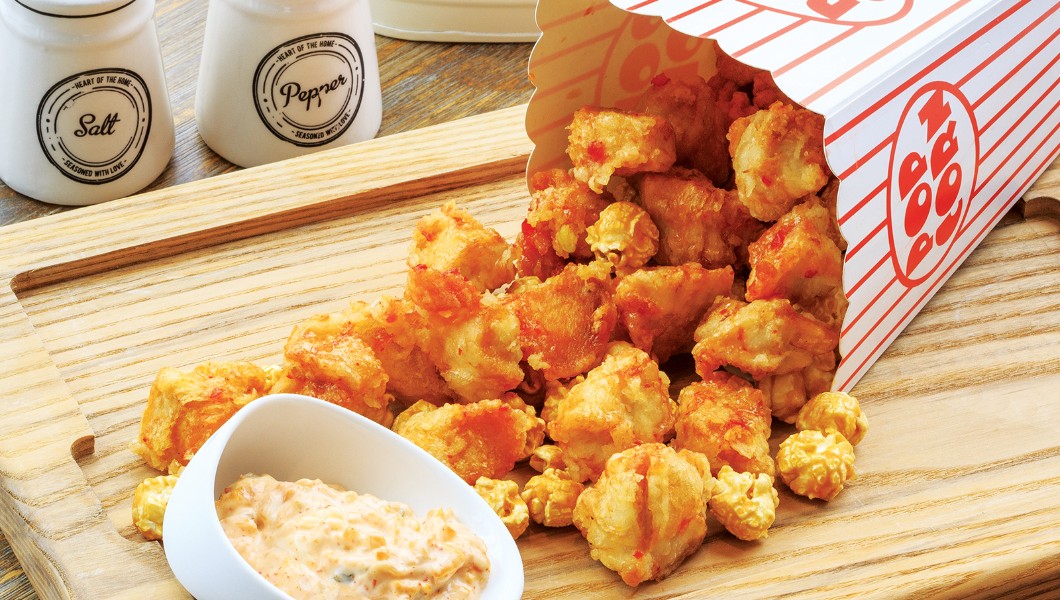
The drama continues downstairs at signature restaurant TING, where set menus of modern European cuisine showcase the incredible artistry of chef Jeremy Brown, accompanied by a jaw-dropping vista of East London: The Shard casting a mighty shadow that tumbles outwards past Tower Bridge and on towards City Airport and Canary Wharf in the distance, the railway tracks snaking away towards southern England from the station below. This is London as you’ve never seen it before.
PLAYING THE MARKET
While there is an undeniable magnetism about being in the hotel, the flourishes of local colour encourage one to get out and explore the surrounding area. Fortunately, assistant head concierge Andreas Petruncenia is on hand to escort me on a tour of one of the neighbourhood’s brightest attractions, Borough Market. Borough is one of London’s oldest covered markets and home to more than 100 traders who proffer a smorgasbord of artisan produce, much of which finds its way to the bars and restaurants at the Shangri-La.
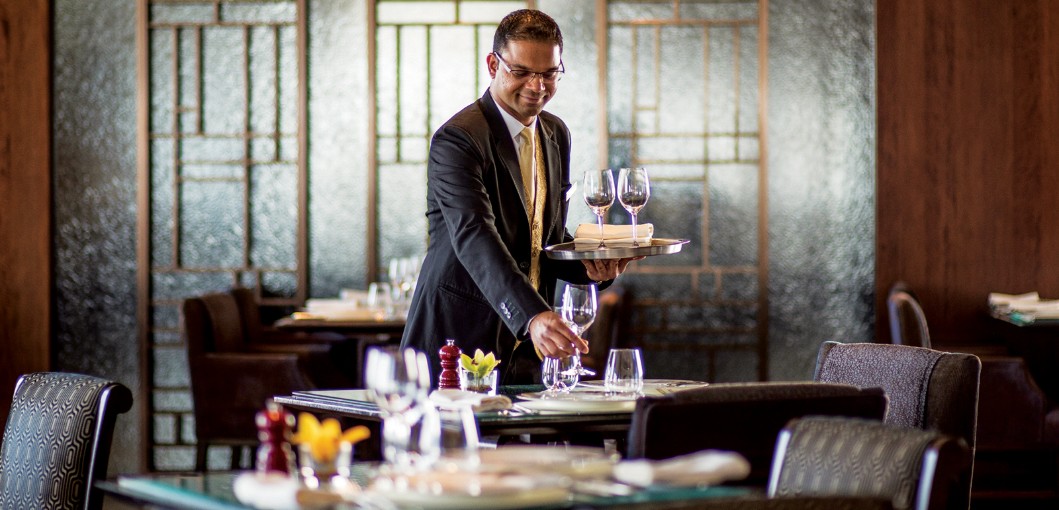
Walking thorough the market and the surrounding streets, Andreas points out a handful of businesses that supply the hotel: local honey from Bermondsey Bees, pungent cheeses from Neal’s Yard, British meat and charcuterie from Cannon & Cannon, and a bounty of fruit and veg from Turnips, which sources seasonal produce from across the country. Bread Ahead provides the baked goods that are served at the hotel’s incredible breakfast and Whirld supplies homemade fudge that can be bought as a snack in Bar 31.
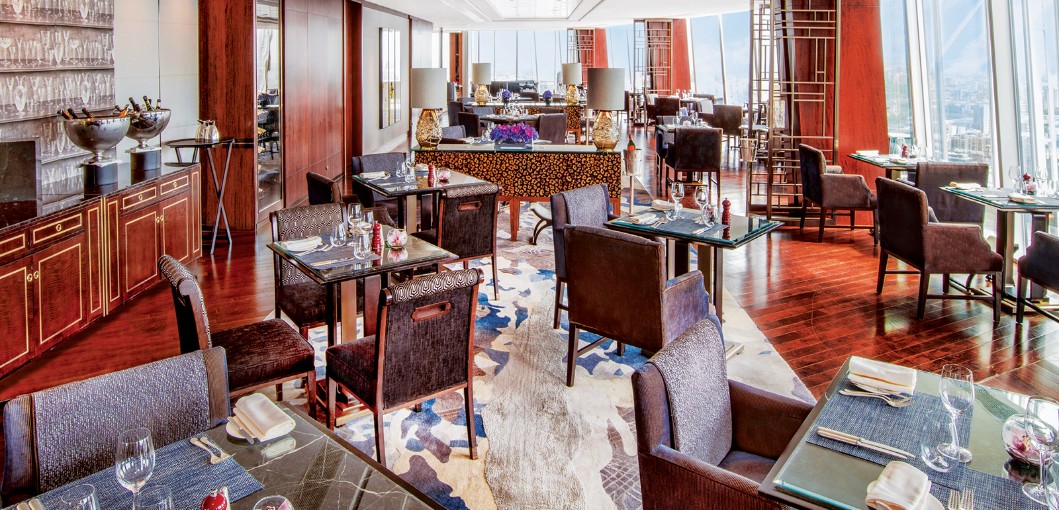
As well as the prized produce that ends up in the Shangri-La’s pantry, there’s an endless array of regional and international goods that make excellent edible souvenirs: soft cheese from France, fragrant Italian olive oil, cured meats and savoury pies, teas from all over the world, and all sorts of pickled, preserved and pressed fruits and vegetables.
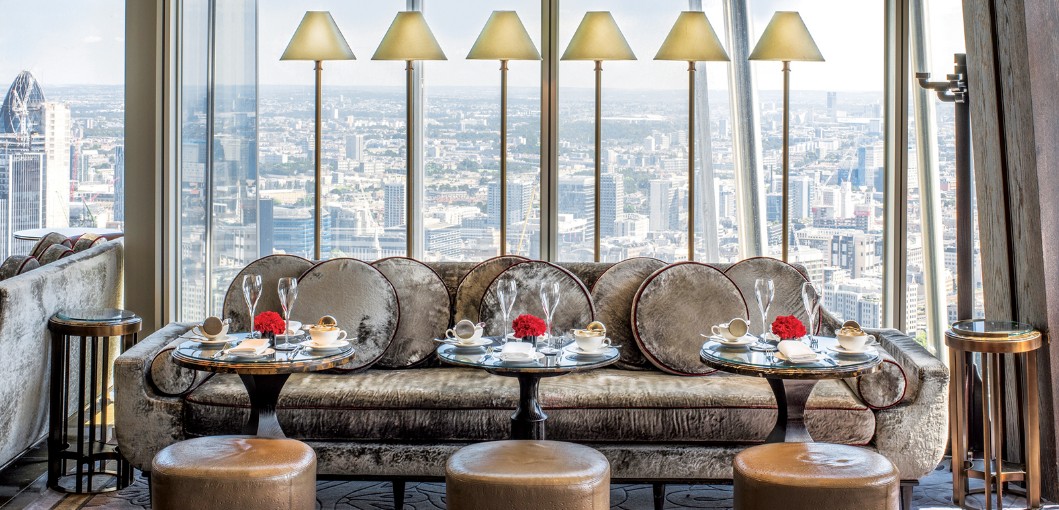
A short walk east of the hotel is the achingly hip Bermondsey, where traditional ateliers, galleries and studios are interspersed with coffee shops, bars and wine merchants, all nestled into converted warehouses and narrow mews. Peter Layton’s London Glassblowing studio and gallery is packed with magnificent decorative glassware and rotating exhibitions and further along, the Fashion and Textile Museum and White Cube contemporary art gallery have helped Bermondsey secure its reputation as an arts and crafts hub. A collection of restaurants and eateries from the likes of Spanish chef Jose Pizarro provide a high-end alternative to nearby Maltby Street Market, which sees a swathe of carpentry workshops and warehouses converted into an indoor-outdoor street food extravaganza every weekend.
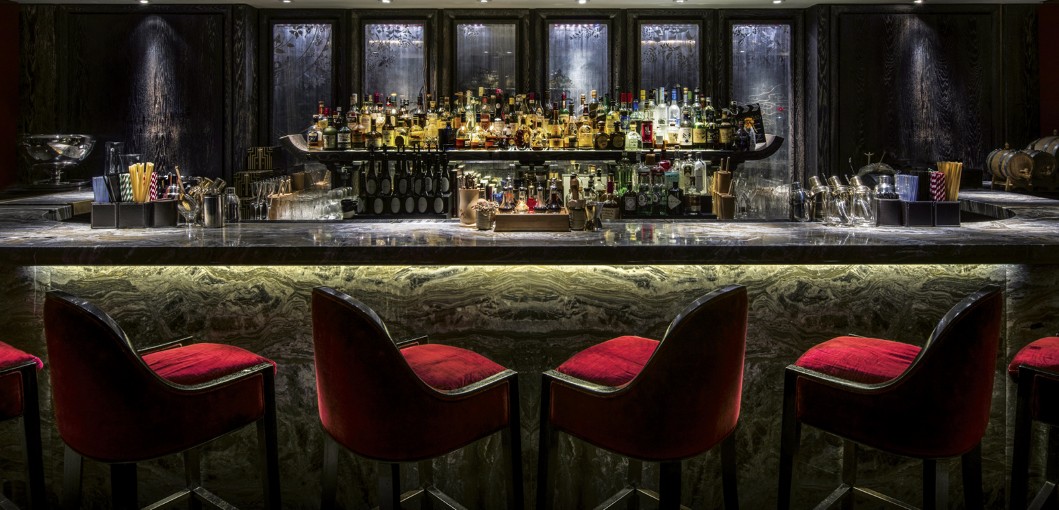
If the Shangri-La Hotel, At The Shard, London set out to become a luxury hotel with a decidedly local flavour, it has done a great job. It’s location at the crossroads of two neighbourhoods that capture the zeitgeist of modern London make it a must-visit address for Anglophiles, and it’s one-stop access to the City of London make it equally appealing for business travellers. By weaving together strands of the city’s colourful narrative through design, performance, music and dining, it creates an immersive destination experience during every element of your stay, even if you are 150-metres above ground level.
www.shangri-la.com/london/shangrila
